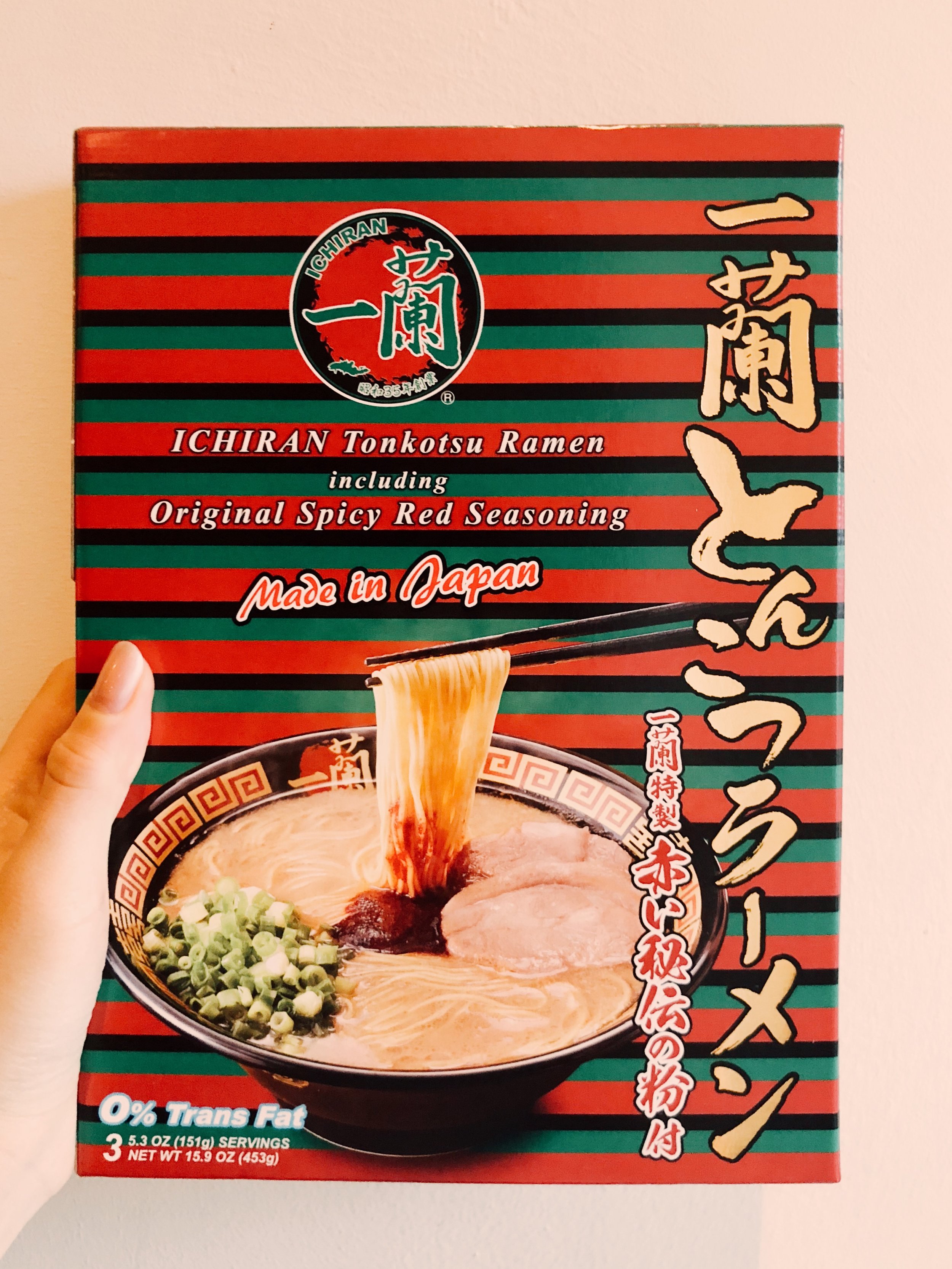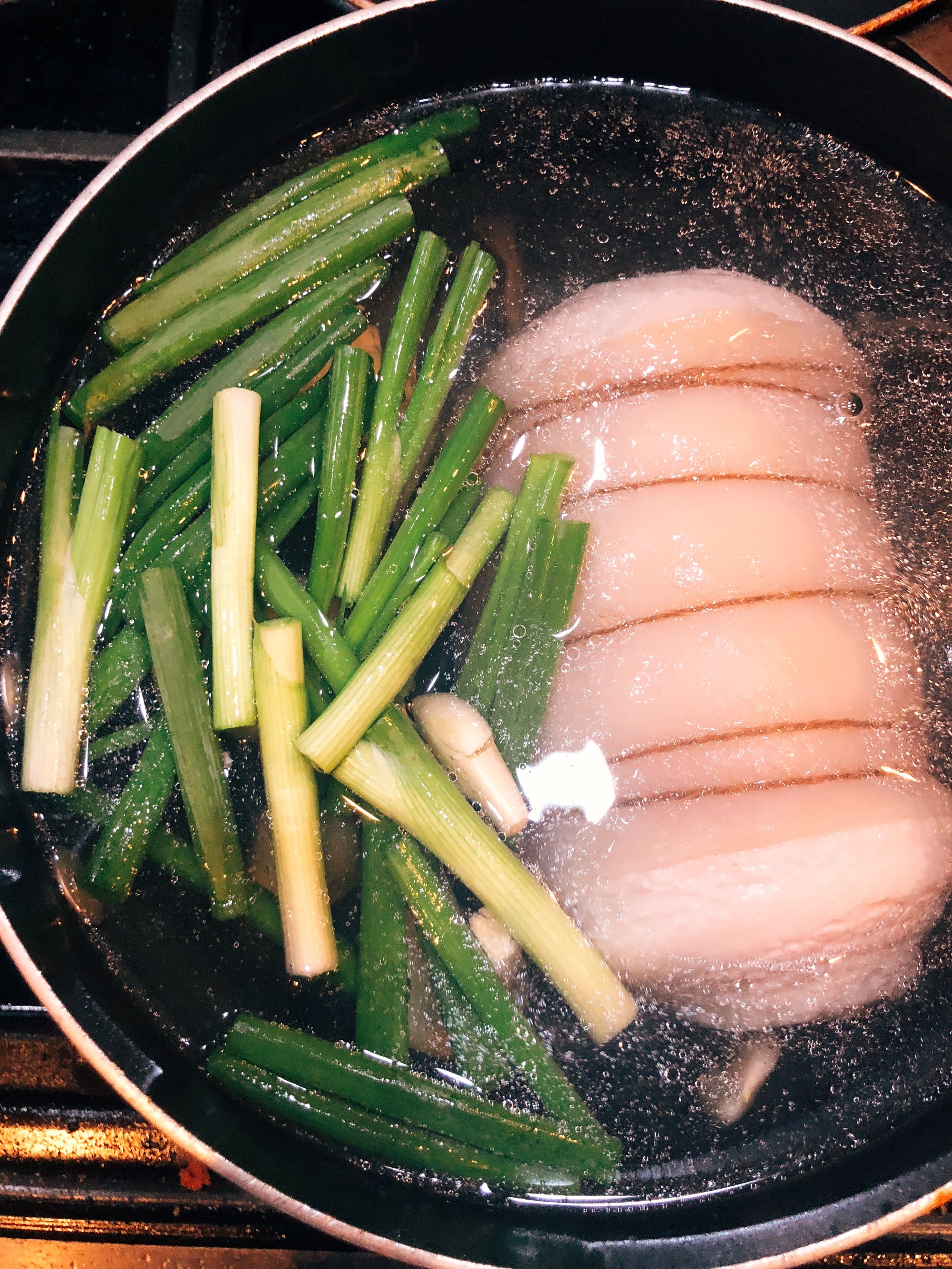Ichiran Tonkotsu Ramen with Two Day Chashu
On my birthday, I was gifted something I didn’t know I needed: a box set of ichiran ramen. A few days later I decided to look into the brand, only to discover that this was (supposedly) the best ramen in the world. I’m not talking about the 99 cent packets of ramen that college students are cliched to live off of - I mean the kind of ramen that people consume in their very own “flavor booth” to enjoy (and slurp) a personalized bowl of the highest quality bowl of noodley goodness. Once the gravity of the situation dawned on me, I knew that I couldn’t just boil a pot of water and toss in some noodles; I was going to commit myself to the authentic experience. So Tyson, if you are reading this, thank you for this culinary grade adventure (and I honestly feel like I should really be filing this under “adventures” more so than the food section on my blog). Here is my quest to understand if this ramen is worth the hype.
You will need:
an Ichiran Tonkotsu ramen set (noodle, soup base, dry red seasoning)
1.5 lb of skin-on pork belly
5 scallions
fresh ginger root
4 garlic cloves
eggs
honey
mirin
soy sauce
granulated sugar
sweet white miso
shiitake mushrooms
nori sheets
kitchen twine
Chashu
In ramen, the star of the show (besides the broth) is the sliced Japanese chashu, also known as marinated braised pork belly. As this is no small undertaking, I waited a full month until I had the time to spend hanging around the kitchen. On Friday, I made my way down to Savenor’s in Beacon Hill (the same place I found the duck breast), and purchased 1.5 lb of skin-on heritage pork belly. The owner repeatedly emphasized to me that this was the best quality pork I could buy, so I trust that it must be pretty good.
On Saturday, I began the chashu process using this recipe for some guidance. First, I rolled the pork belly and secured it with a lot of kitchen grade twine. I boiled a pot of water and blanched the pork for fifteen minutes. This step is important to rid the pork of impurities for a cleaner taste. Then, I removed the pork, tossed the water, and cleaned the pot. I prepped about 4 scallions (cut into 4 segments), 4 slices of ginger, and 4 crushed garlic cloves and added this into the clean pot with enough water to cover the pork. I brought this to a boil before bringing it back down to medium heat and left it for about 1 hour + 45 minutes with the lid partially covering the pot. During this time, I prepped the marinade (1/4 cup honey, 1/4 cup granulated sugar, 2 cups Kikkoman soy sauce, 1/2 cup mirin, and 2 tablespoons sweet white miso). Once the pork was done stewing, I strained out the broth into a container to be saved and threw out the vegetables. You can make your own broth base from this, but I chose to put it aside since I wanted to use the Ichiran soup base. I returned the pork to the pot and added the marinade and enough water to cover the pork. I brought the marinade to a boil and then took the heat down to a simmer for an hour.
Pre-broth boil
Post boil- remaining liquid was strained out for broth.
Egg Intermission
For me, another essential part of a good bowl of ramen is the soft boiled egg. Since the marinade was bubbling on the pot, I took this time to experiment with making the egg ahead of time so that it could also marinate over night. This took me 5 attempts until I peeled a perfect egg, but this experimentation will come to your benefit. I brought a saucepan of water to a boil and gently placed my egg in, allowing it to boil for about 13 minutes with attentive rolling of the egg for an an even cook. I prepped a container of ice cold water and immediately placed the egg in. Not only does this stop the cooking, but it helps the egg separate from the shell/membrane for an easier peel. After it cooled, I gently peeled the egg under cold running water.
A compilation of the failed eggo attempts ):
Marinade
After the pork finished simmering in its marinade, I allowed it to cool for another hour in the pot so it could really soak in the juices. Then, I scooped out enough marinade into a ziplock bag to cover my soft boiled egg and squeezed out all the air. I strained the rest of the marinade into a container (also can be used for a homemade broth) and wrapped the pork in plastic wrap so it could develop flavors while refrigerated overnight.
Post marinade
14 Hours Later…
So Sunday rolled around and it also happened to be lunchtime. I checked on my egg and it was indeed a lovely shade of marinated brown. This is the fun part - picking the accessories for the ramen. For me, I envisioned my bowl with nori sheets, shiitake mushroom, scallions, marinated egg, and of course, the chashu. However, there are so many other toppings that you can take advantage of, such as bamboo shoots, corn, or tofu.
I started by boiling 2 1/2 cups of water and cooked the shiitake mushroom cap in it for a few minutes. Meanwhile, I also heated a pan on low to both heat/render a bit of fat out of the sliced chashu. I added a pack of ramen noodles from the Ichiran set and cooked it according to direction and then added in the rest of the toppings and wow! The broth, despite coming from a little packet, somehow still achieved a high viscosity that you’d imagine from a hearty bowl of pork bone broth. A little packet of dry red seasoning came with the set that added a boost of flavor, enhancing the flavor without being overly spicy such that you couldn’t taste anything else. I was especially impressed by the texture of the noodles, which honestly reminded me of noodles my dad would make me more so than a pack of dried ramen noodles. I love delayed gratification (and reminding myself that this is a great indication of a successful person), and this was the ultimate version of a long term commitment to the closest version of an authentic bowl of Ichiran tonkotsu ramen.










